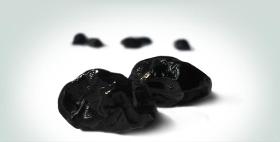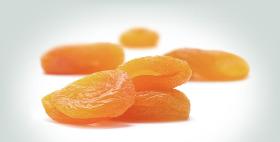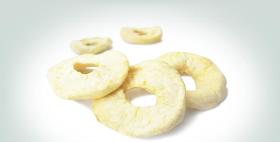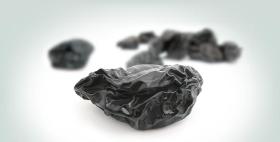- europages
- >
- COMPANIES - SUPPLIERS - SERVICE PROVIDERS
- >
- flavors
Results for
Flavors - Import export

HORST WALBERG TROCKENFRUCHT IMPORT GMBH
Germany
Productinformation Peas are harvested throughout september and october in California, whereas in South Africa harvest time is around february and march. It is important to harvest them shortly before becoming fully ripe, because they would be too soft for further processing. Directly afterwards they get shockfrosted, cut in half – and dried as mottled pieces. The unfumigated fruits are better in terms of taste as the fumigated ones, as they have a degree of moisture up to eighteen percent. Nevertheless the unfumigated product is more expensive, mainly because more fresh fruits need to be applied for production. Moreover, the drying process takes longer, which lets them loose more weight. Origin The main pear-exporting countries are South Africa, Argentina and China.
Request for a quote
HORST WALBERG TROCKENFRUCHT IMPORT GMBH
Germany
Productinformation Blueberries, also known as huckleberries, are most commonly known as tasty and blue-colored ingredients of cakes and cookies. In the US everybody knows blueberry muffin or blueberry pancakes – whereas in Europe the berry is eaten with yoghurts or as fruity jelly. There is a big difference between cultivated and wild growing berries. The cultivated ones grow on shrubs with a height of up to two meters. Their natural blue colorant is only part of their pericarp - their fruit meat looks white. Blueberries taste more sweet than sour and have a slightly wild flavor – and as dried berries, they are a heavenly blue pleasure. Origin In Europe blueberries grow in the mediterrenean area, as well as in the northern part of Europe, mainly in France, the Netherlands and Poland. Between april and may the berries are harvested, roughly at the same time in Europe as in the US – whereas in South America (Argentina and Chile), like in South Africa and New Zealand, the blueberry is harvested and exported in the other half of the year.
Request for a quote
HORST WALBERG TROCKENFRUCHT IMPORT GMBH
Germany
Productinformation Around april and may apricot trees are in full bloom. But during this time of year, when nights can still be very cold, it is a dangerous time for the forthcoming harvest – which is then around july and august. Apricots get shaken off of the trees by hand, and afterwards are layed down on big awnings. There the fruits will dry for three more days until they are pitted and brought to fumigation boards. Afterwards they are once more dried in the sun, which can take up to ten days - until they are dried down to an amount of moisture around fifteen percent. Origin Dried apricots originate mainly from Turkey, the Middle East and Southwest Aisa. But also in South Africa, the US (California) and Australia apricots are harvested in a large amount.
Request for a quote
HORST WALBERG TROCKENFRUCHT IMPORT GMBH
Germany
Productinformation Harvest time for apples differ from China, where it takes place around september, and Chile, where they become ripe between march and april. The fresh fruits are sorted by size, then peeled, pitted, cutted in the desired shape – quartered, loops or cubes – and finally dried. The drying process takes place in flue-curing tunnels and takes up to three to four days to fully finish. Thanks to treatment with sulfur, the bright white color of the apple remains intact - and additionally, any form of pest gets deadened. Dried apples from Italy on the other hand get treated with citric acid and sea salt instead of sulfur – so they stay much lighter in color. Origin The main countries of origin are Italy and China – in China they are still cutted manually. In addition, apple loops are produced in Chile and South Africa.
Request for a quote
HORST WALBERG TROCKENFRUCHT IMPORT GMBH
Germany
Productinformation In California prunes are harvested between august and october, whereas in South America they are ripe and ready already around march. Prunes get dried in a flue-curing process until their level of moisture reaches fifteen percent. The process of pitting their stones can be handled in two ways: "ashlock pitted" means pushing-out the stone with a thorn, whereas "elliot pitted" stands for removing the stone sideways with several thorns. Last but not least, there are the "ready-to-eat prunes": These come with a moisture up to mellow thirty-five percent. Origin The main producing country are the United States: They have a very large industry branch in California. The second most important distributors are located in South America: Chile and Argentina. European prunes are cultivated mainly in Bordeaux in France, but also in the Balkan States.
Request for a quote
HORST WALBERG TROCKENFRUCHT IMPORT GMBH
Germany
Productinformation Pineapple loops have a quite high degree of dryness, making them very al dente. However, once bitten into, they will unfold an incomparable juicily flavor. You can actually taste the double effect of the sun – first while the fruits are ripening, and the second time during the drying. Highly regarded in indian regions and Sri Lanka, dried pineapple rings start to become more famous all over Europe. Origin The small, aromtic pineapple loops are produced mainly in India and Sri Lanka. In South America, especially Colombia, they are also manufactured as tiny, tasty snacks in ring-form.
Request for a quoteDo you sell or make similar products?
Sign up to europages and have your products listed
Results for
Flavors - Import exportNumber of results
6 ProductsCountries
Company type
Category